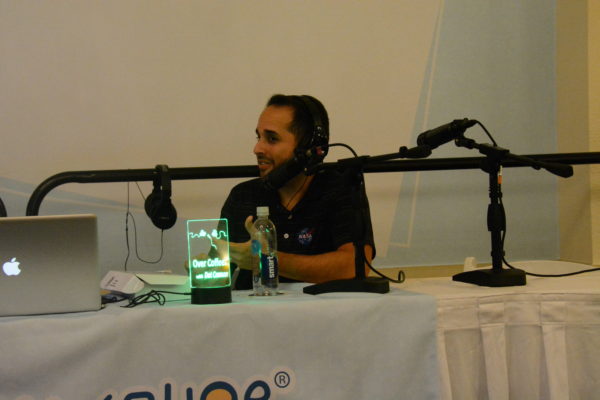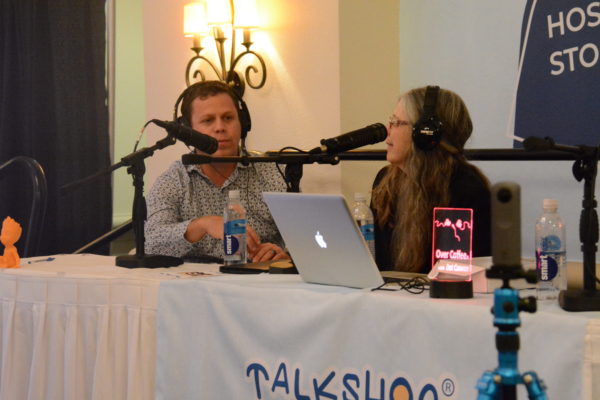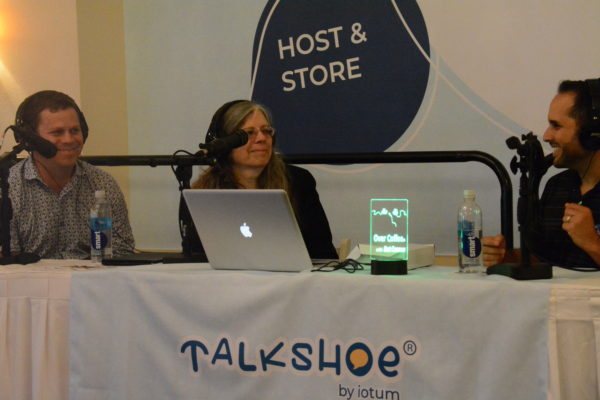An Over Coffee® special-edition podcast, recorded onsite at Podcast Movement 2019
Eight years ago, students at Merritt Island High School weren’t planning to launch a satellite into space.
Podcast: Play in new window | Download
Subscribe: RSS
Working under the guidance of NASA engineers, as part of a new STEM program, the students were simply exploring the process of designing a cube satellite, or CubeSat.
But the project grew into “StangSat”.
The students learned, innovated, and raised funds. They also presented their designs for the grapefruit-sized satellite to NASA and the U.S. Air Force. And…
Early morning, June 25, 2019, a SpaceX Falcon Heavy rocket roared off the launch pad at Kennedy Space Center. On board as part of its cargo was Merritt Island High’s StangSat.
According to NASA’s webpage, StangSat is part of the Department of Defense’s Space Test Program-2 mission. StangSat will measure the shock and vibration of a launch, while communicating with a sister satellite, Launch Environment Observer, or LEO, which students at Cal Poly built.
Why “StangSat”? Students named their CubeSat after their school mascot, the mustang!
StangSat’s June 25 launch was the culmination of the work of nearly 80 students, who built the satellite under the supervision of their NASA mentors. Since 2011, NASA has been working with the students through a Space Act Agreement between Kennedy Space Center and schools in Florida’s Brevard County.

Onsite at the Talkshoe Pavilion at Podcast Movement 2019, in Orlando, we had the opportunity to talk with NASA Electronics Engineer and Bid and Proposal Manager Kelvin Ruiz, who served as StangSat’s main software mentor, and with NASA Integration Engineer Shaun Daly, lead mentor on the StangSat project.

Kelvin and Shaun shared the story of StangSat, offered a behind-the-scenes look at the process of building the cube satellite and shared their favorite experiences from their time spent mentoring the students.
On this edition of Over Coffee®,you will hear:
-
What first inspired Kelvin and Shaun to become engineers in the space-exploration field;
-
How the StangSat project evolved from a simple design project to real-world engineering;
-
Some of the challenges Kelvin and Shaun saw the student team encounter while building StangSat;
-
What was involved for the students, while working on the project;
-
What kinds of tasks the students could perform, during the process;
-
How the StangSat project led some of the participating students to their future careers;
-
What StangSat is currently doing in space.

